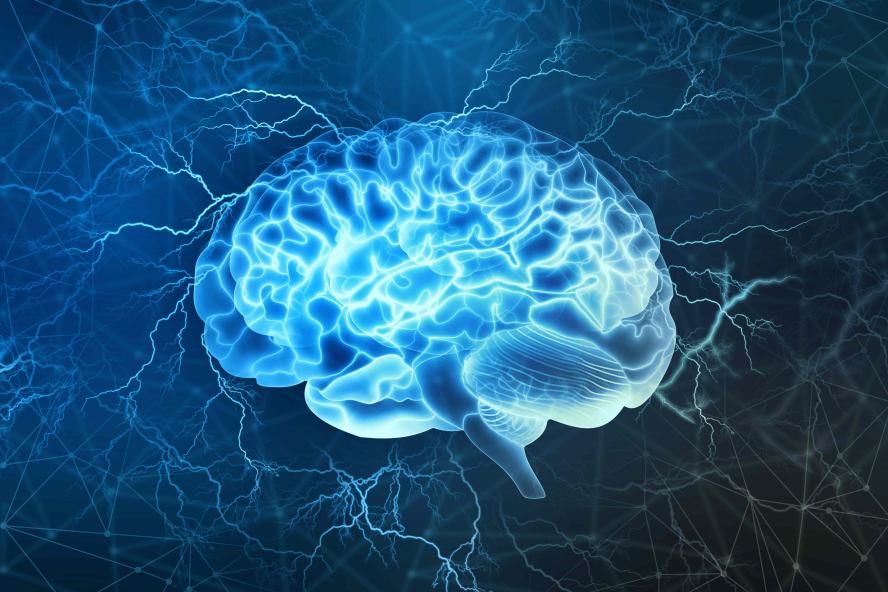-
About
- Departments & Offices
-
Academics
- Physician Assistant
- Special Master’s (MBS)
-
Admissions & Financial Aid
- Tuition & Fees
-
Student Experience
-
- Student Resources by Program
- Academic & Student Support
- Wellness & Wellbeing
- Student Life
- Events & Traditions
-
-
Research
- Research Labs & Centers
- Tufts University-Tufts Medicine Research Enterprise
-
Local & Global Engagement
- Global Health Programs
- Community Engagement
Study: Traumatic Brain Injury Leads to Widespread Changes in Neural Connections
Tufts University School of Medicine researchers develop imaging technology that records neuronal activity throughout the brain during the first weeks of recovery.

By Joseph Caputo
A head injury serious enough to affect brain function, such as that caused by a car accident or sudden fall, leads to changes in the brain beyond the site of impact, Tufts University School of Medicine scientists recently reported in the journal Cerebral Cortex. In an animal model of traumatic brain injury, the researchers found that both hemispheres work together to forge new neural pathways in an attempt to replicate those that were lost.
“Even areas far away from the injury behaved differently immediately afterward,” says first author Samantha Bottom-Tanzer, an MD/PhD student in neuroscience at the School of Medicine. “Traumatic brain injury research tends to focus on the region of injury, but this study makes a good case that the entire brain can be affected, and imaging in distal regions can provide valuable information.”
Bottom-Tanzer and colleagues are the first to use an imaging technique combining fluorescent sensors of neuronal activity and electrodes to record how many parts of the brain talk to each other after a brain injury. The team tracked neural activity in mice for up to 3 weeks post-injury during periods of exercise and rest.
While overall neuron-to-neuron connectivity decreased after brain injury, all the mice could use an exercise wheel as normal. However, the activity of injured brains throughout both periods of running and rest was remarkably different from healthy brains. Surprisingly, they did not display distinct brain wave patterns when they were moving versus when they were still, which is what the researchers would have expected.
“Whether paying attention or walking, brains switch states depending on the task you’re doing,” says senior author Chris Dulla, professor and interim chair of neuroscience at the School of Medicine. “After traumatic brain injury, this ability is not as robust, indicating such events are impairing how the brain switches states in a way that we don’t yet understand.”
“What we can see from the data is that the brain has new solutions for how to do all these complex tasks,” he adds.
This plasticity has clinical implications. Traumatic brain injuries often lead to long-term health problems and kill tens of thousands of Americans each year, reports the Centers for Disease Control and Prevention. The researchers predict that imaging a patient’s brain as they carry out various activities could better pinpoint how somebody might be injured or which functions are impacted, enhancing an individual’s treatment.
“This study underscores the complexity of how injury affects a dynamic and always-changing brain,” says Bottom-Tanzer. “Most people think of the brain in one state, but our data indicates there are fluctuations, and it might offer opportunities to explore different interventions for physical therapy, speech therapy, and more.”
Going forward, Bottom-Tanzer, Dulla, and colleagues plan to research changes in neural activity following traumatic brain injury for an even longer post-recovery period. They will also explore how their imaging technology can be used to identify changes in brain activity that may translate to specific types of dysfunction or correlate with long term outcomes of disease.
###
CITATION: This study was supported by grants from the American Epilepsy Society (award number PT0035), the U.S. Department of Defense (W81XWH1810699, W81XWH2210769), and National Institute of Neurological Disease and Stroke (R21NS098009). Complete information on authors, funders, and conflicts of interest is available in the published paper.
DISCLAIMER: The content is solely the responsibility of the authors and does not necessarily represent the official views of the funders.
Department:
Neuroscience